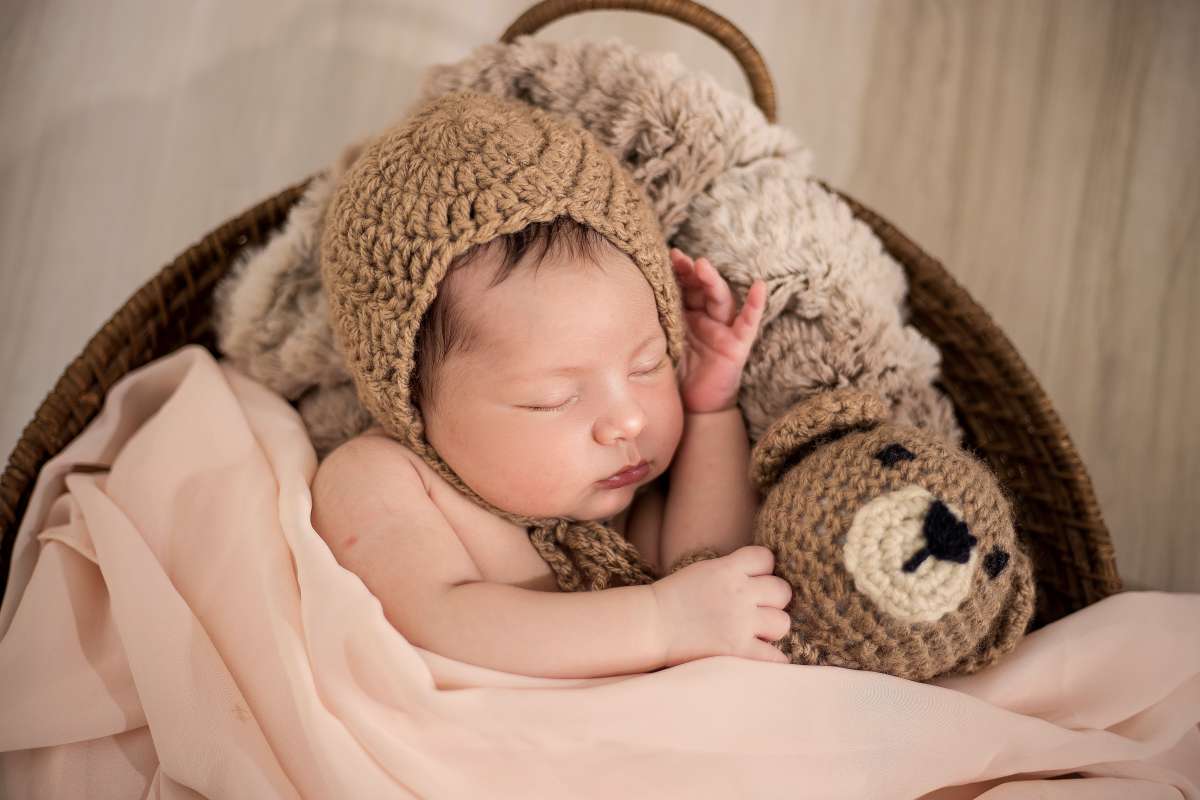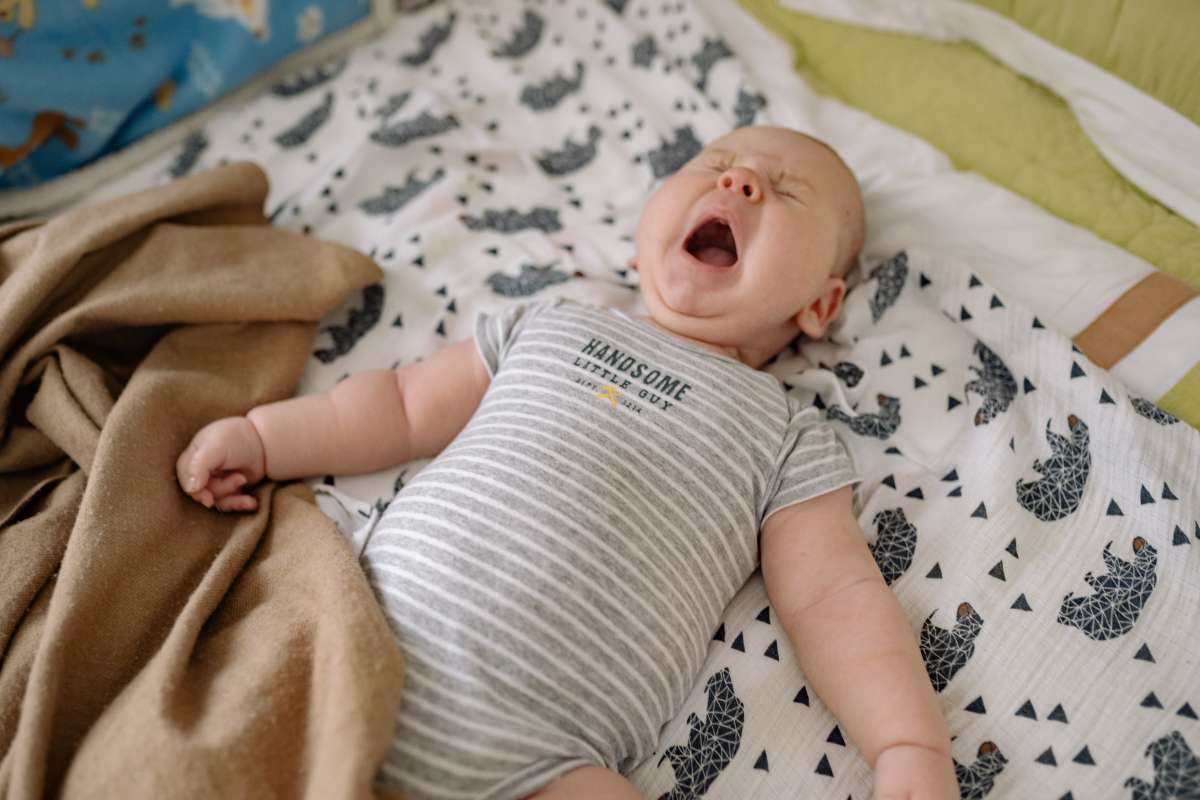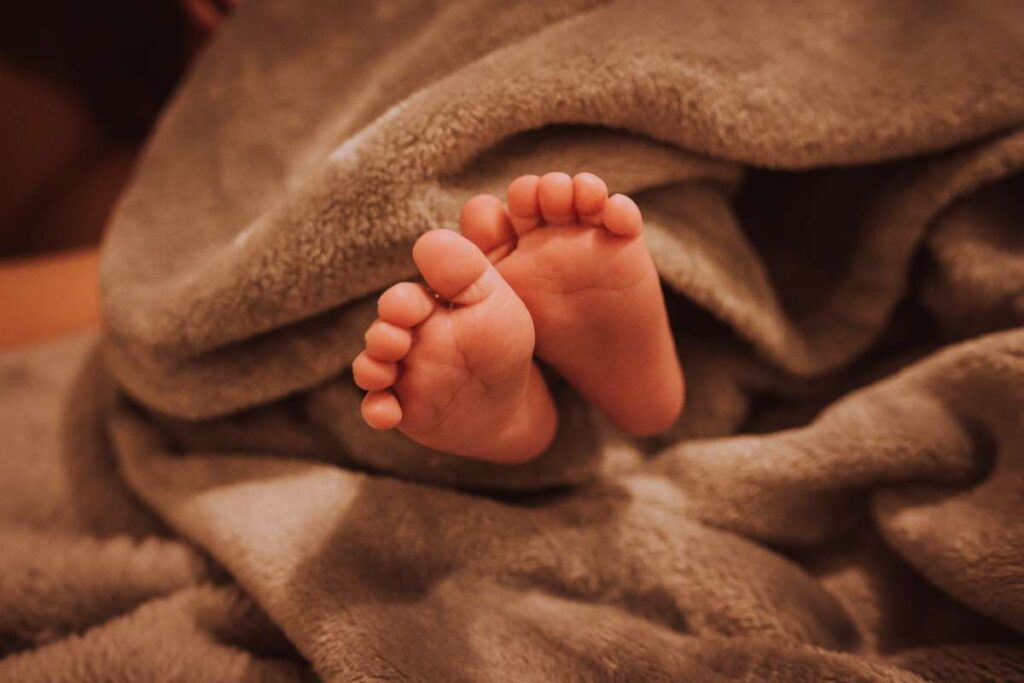Comfort and safety are the two keywords highlighted in our minds when we choose nursery items for our baby. And to get a complete bedding package, we need comfy and safe sheets.
During winter or on cold nights. Cotton crib sheets are not enough to keep your little one warm. Let alone other less natural materials. Here we suggest what you've surely already heard: the warmest baby sheets are the cotton flannel ones.
In this post, we pick the best flannel crib sheets available, we compare them, and then it will be easier for you to decide the best one to keep your baby warm and nourished. Yes, "quiet sleep" is the other dreamy keyword for all parents.
What to Look for in a Crib Sheet
A new baby is a precious thing, and he will need lots of love and attention, but he will also need quite a few items to make his new life as comfortable as possible. While a crib and mattress may be at the forefront of your mind, many people tend to forget how important choosing the right baby crib sheets can be. There are several things to keep in mind when choosing the proper crib sheets for your baby's mattress.
One of the most important would be to ensure that the sheet fits the mattress properly. You do not want a sheet that will potentially slip away from the mattress. It should be fitted and snug to the bed.
Some other things to consider before purchasing any sheets include:
- Choosing the material that's right for you and your baby.
- Find sheets made from machine washable materials.
- Remember to buy more than one set of sheets.
The warmest among the many fabrics used to make baby sheets would, without a doubt, be flannel crib sheets. More and more parents are opting to use flannel during the winter months instead of cotton. The material is machine washable and gentle on your baby. It also retains warmth so that you are not tempted to cover your baby with a blanket. Keep in mind that the latter is not a recommended practice.
Baby Nursery FAQs
While they're thicker and warmer than traditional sheets, they're completely breathable. If that requires a flannel sheet, it's fine. If they prefer something lighter, that's also alright. Just make sure it's breathable and snug, so no stretchy microfleece crib sheets for your littlest babies.
Flannel sheets are warmer than regular sheets and help you sleep better in the winter. If you want luxuriously warm and breathable warm sheets, choose cotton flannel. If you want less expensive or easy-to-maintain warm sheets, choose micro flannel.
Flannel will provide extra warmth and comfort in the cold winter months. Make sure the sheet fits snugly around the mattress and won't come loose while your baby is sleeping.
To achieve the purpose, you need to place a hot water bottle or heating pad over the crib sheet for at least 30 minutes before putting your little one to sleep in the crib. Most importantly, remove it before laying your baby down to avoid overheating or burns.
Blankets should never be in your baby's crib, so if you're worried about your little one getting cold during the night, consider a sleep sack and opt for a flannel crib sheet.

What Every Parent Should Know About Putting Flannel Sheets On Their Infant's Crib
Pregnancy bliss includes shopping for the baby's room. We spent a lot of time pouring over Land of Nod and Pottery Barn catalogues because we wanted our baby's room to be adorable, secure, and comfortable. Let's be honest: flannel is one of the cosiest options for bed sheets.
Many parents, in anticipation of milder weather, have already switched their kids over to the warmer fabric of flannel sheets, but is it safe for infants to sleep on? Worried that they'll overheat, what if? How airtight are the blankets?
You wouldn't want to take any chances with your baby's well-being. The regulations regarding sleep surfaces have evolved in recent times. The days of carefully selecting a bumper, quilt, and crib skirt before beginning to decorate the nursery are over.
Crib bumpers are no longer manufactured, crib blankets are used mostly for decorative purposes, and most modern cribs are constructed at a lower height, rendering crib skirts unnecessary. Some families don't even bother with a crib. Instead, they stock up on (hopefully) comfortable bedding, such as sheets, mattress pads, and wearable blankets, and call it a night.
Knowing how many sheets you'll likely go through each week between spitting up, diaper blowouts, drool rings, and leakage, it's just easier to do that than to worry about coordinating tartan patterns or the Noah's Ark designs that were so popular in the 1990s. Though the 1990s provided us many wonderful things, such as grunge music and Buffy, the infant bedding of that era was generally repulsive.
The things and surface on which your infant sleeps are, nonetheless, crucial. Babies should only sleep on loose, breathable bedding in a crib without a bumper, cushion, or quilt, as recommended by the Consumer Safety and Protection Coalition (CPSC). Sleep sacks are the safest option if you must provide a blanket, as they allow for air circulation. As an added precaution, the American Academy of Pediatrics (AAP) suggests keeping your baby in the same room as you for at least the first year of their lives, and ideally for the entire duration.
Instead of putting a loose blanket in the crib with the baby, which could cause suffocation or strangling, the AAP recommends using a wearable blanket instead. When our children were infants, we found that dressing them in sleeper suits or cosy footie pyjamas helped them to fall asleep much more easily. They were so fond of them that they eventually developed a healthy fear of blankets and now actively avoid sleeping with one on. (Yet they do, and it baffles me that kids would choose to do so in order to play Roblox on iPads while huddled beneath enormous blankets.)
There isn't much information available on the best sheets to use, other than the fact that they should be snug but airy. Does flannel allow for air circulation? Does it have a little of give? We found that the majority of 100% cotton flannel crib sheets are combed to a luxuriously smooth finish, making them ideal for our little one's delicate skin. They are thicker and warmer than standard sheets, but they still allow for total air circulation.
Consider the room temperature if you're worried about your infant getting too hot. A baby's nursery should be kept at a comfortable temperature of 62 to 68 degrees. You might find that chilly, but keeping babies from getting too hot is an important step in avoiding sudden infant death syndrome.
A decent rule of thumb, as mentioned on the page, is to dress your infant so that you are comfortable, and then add another thin layer. If they are properly warmed, their core temperature should feel warm and their toes should be noticeably cooler.
It's acceptable if a flannel sheet is needed for that. It's fine if they'd rather have something less substantial. Make sure it is breathable and has a snug fit; stretchy microfleece crib sheets are not recommended for infants. They pose a fire and asphyxia risk to infants and toddlers since they don't allow air to get through.
Also, stock up on sheets. It doesn't matter what material they're made of. They're essential.
Reasons Why You Should Use Flannel Crib Sheets
In particular for the colder months, take a look at the following options for Flannel Crib Sheets. When the weather is chilly or rainy, put your infant to bed in soft flannel sheets.
The special quality of flannel blankets is that the air is trapped in the tiny pockets created by the fuzzy surface. Your baby's body heat will be kept in all night long by this layer of air, which will act as insulation. Furthermore, flannel infant bed sheets are still breathable even if they can trap this heat in.
Additionally, the high absorption rate of the fabric ensures that any moisture is wicked away from the body as your baby sleeps quietly. You may rest assured that your newborn will be comfortable on flannel sheets because they are often produced from hypoallergenic, organic cotton. First, you should know how we choose these specific crib sheets before you check out the whole review.
What mattered most were the parents' feedback and thoughts. Over 900 people have left reviews on Amazon about the prefered bedding. We eliminated products from consideration for which we did not find sufficient user reviews. In addition, we didn't keep anything with a rating lower than 4.2.
This process allowed us to identify the top flannel baby bedding options. We'll start with a high-level summary of the findings, and then move on to a detailed analysis of each of the top-performing sheets.

Quilted Flannel Cotton Fitted Crib Sheets
What to Look for in a Warm Crib Sheet
When shopping for winter crib bedding, there are a few key characteristics to look for.
- Search first for baby linens that are entirely made of organic materials. You can wear these without worrying about irritation, as they are hypoallergenic, and they will retain their warm feel over time. Not only that, but there is no risk of chemical contamination or residue.
- Do you, like me, find it annoying when your clothes start to pill? The good news is that you can prevent this with properly secured crib bedding. Try to find brands like Threadbare, which have an anti-pilling coating. You won't have to buy new ones as often, and they'll keep their plush comfort for longer.
- Next, consider the thread count of the crib linens you're considering. Makes the crib the cosiest place in the world for your little one. Even if a thread count of 400 or more is remarkable, anything from 250 to 300 tc will do.
- Comfortable sleep begins with crib sheets that let air circulate. Different textiles have different levels of breathability. The ventilation properties of Jersey cotton, in comparison to flannel, can help keep your infant drier as they sleep.
- Be sure that your crib sheets have corner inclosures that may be fastened with all-around elastic. When changing, nursing, or otherwise caring for a baby, this will help keep them from falling to the floor.
- Materials have varying needs in terms of maintenance. While frequent washing and drying can extend the life of some fabrics, others must be treated gently to preserve their vibrant colours and structural integrity. Check the labels on the crib sheets you're interested in buying to see what kind of care they require.
- Finally, ensure that the quality of your linens is backed by a solid warranty. There should be a replacement or refund policy in place in case of stitching or other manufacturing flaws.
What to Look for in a Safe Crib Sheet
Because your baby will be spending so much time in his or her crib, it is crucial that you select a sheet manufactured from non-toxic materials. It's important to check the labels since some textiles are more dangerous than others.
- Keep your baby safe from the phthalates found in most vinyl crib sheets, which have been linked to an increased risk of SIDS and other disorders in children.
- One should exercise caution around bisphenol A (BPA), an industrial chemical that can be found in a wide variety of typical consumer goods including vinyl and plastic. Pick a baby blanket or sheet that wasn't created with this material.
- Pick organic because it's better for your baby and the planet. We only buy baby clothes that have the GOTS certification because we know they are of great quality, chemical-free, and safe for infants. There is currently no oversight on the use of the phrase "organic" in baby items; therefore, if you want to make sure that your crib sheets are truly organic, you should look for a GOTS or OEKO-TEX label.
- Go with the Flow:
- The synthetic fabrics used by some crib sheet manufacturers, like as polyester and microfiber, may include phthalates, BPA, and PVCs, all of which are known to be detrimental to human health. Your baby's skin (and yours) could be irritated by these substances. If at all possible
- Snaps are much better than buttons for babyproofing your home, so use them whenever possible. There will be no risk of suffocation from button dislodgement (there are several instances of children being strangled on buttons). Snaps also have a longer lifespan than buttons.
Conclusion
The warmest among the many fabrics used to make baby sheets would, without a doubt, be flannel crib sheets. The material is machine washable and gentle on your baby. It also retains warmth so that you are not tempted to cover your baby with a blanket. The regulations regarding sleep surfaces have evolved in recent times. Babies should only sleep on loose, breathable bedding in a crib without a bumper, cushion, or quilt. The American Academy of Pediatrics recommends keeping your baby in the same room as you for the first year of their lives.
Content Summary
- Comfort and safety are the two keywords highlighted in our minds when we choose nursery items for our baby.
- And to get a complete bedding package, we need comfy and safe sheets.
- During winter or on cold nights.
- Cotton crib sheets are not enough to keep your little one warm.
- Let alone other less natural materials.
- Here we suggest what you've surely already heard: the warmest baby sheets are the cotton flannel ones.
- In this post, we pick the best flannel crib sheets available, we compare them, and then it will be easier for you to decide the best one to keep your baby warm and nourished.
- Yes, "quiet sleep" is the other dreamy keyword for all parents.
- What to Look for in a Crib Sheet A new baby is a precious thing, and he will need lots of love and attention, but he will also need quite a few items to make his new life as comfortable as possible.
- While a crib and mattress may be at the forefront of your mind, many people tend to forget how important choosing the right baby crib sheets can be.
- There are several things to keep in mind when choosing the proper crib sheets for your baby's mattress.
- One of the most important would be to ensure that the sheet fits the mattress properly.
- You do not want a sheet that will potentially slip away from the mattress.
- It should be fitted and snug to the bed.
- Some other things to consider before purchasing any sheets include: Choosing the material that's right for you and your baby.
- Find sheets made from machine washable materials.
- Remember to buy more than one set of sheets.
- The warmest among the many fabrics used to make baby sheets would, without a doubt, be flannel crib sheets.
- More and more parents are opting to use flannel during the winter months instead of cotton.
- The material is machine washable and gentle on your baby.
- It also retains warmth so that you are not tempted to cover your baby with a blanket.
- Keep in mind that the latter is not a recommended practice.
- What Every Parent Should Know About Putting Flannel Sheets On Their Infant's Crib Pregnancy bliss includes shopping for the baby's room.
- We spent a lot of time pouring over Land of Nod and Pottery Barn catalogues because we wanted our baby's room to be adorable, secure, and comfortable.
- Let's be honest: flannel is one of the cosiest options for bed sheets.
- Many parents, in anticipation of milder weather, have already switched their kids over to the warmer fabric of flannel sheets, but is it safe for infants to sleep on?
- Worried that they'll overheat, what if?
- How airtight are the blankets?
- You wouldn't want to take any chances with your baby's well-being.
- The regulations regarding sleep surfaces have evolved in recent times.
- The days of carefully selecting a bumper, quilt, and crib skirt before beginning to decorate the nursery are over.
- Crib bumpers are no longer manufactured, crib blankets are used mostly for decorative purposes, and most modern cribs are constructed at a lower height, rendering crib skirts unnecessary.
- Some families don't even bother with a crib.
- Instead, they stock up on (hopefully) comfortable bedding, such as sheets, mattress pads, and wearable blankets, and call it a night.
- Knowing how many sheets you'll likely go through each week between spitting up, diaper blowouts, drool rings, and leakage, it's just easier to do that than to worry about coordinating tartan patterns or the Noah's Ark designs that were so popular in the 1990s.
- Though the 1990s provided us many wonderful things, such as grunge music and Buffy, the infant bedding of that era was generally repulsive.
- The things and surface on which your infant sleeps are, nonetheless, crucial.
- Babies should only sleep on loose, breathable bedding in a crib without a bumper, cushion, or quilt, as recommended by the Consumer Safety and Protection Coalition (CPSC).
- Sleep sacks are the safest option if you must provide a blanket, as they allow for air circulation.
- As an added precaution, the American Academy of Pediatrics (AAP) suggests keeping your baby in the same room as you for at least the first year of their lives, and ideally for the entire duration.






